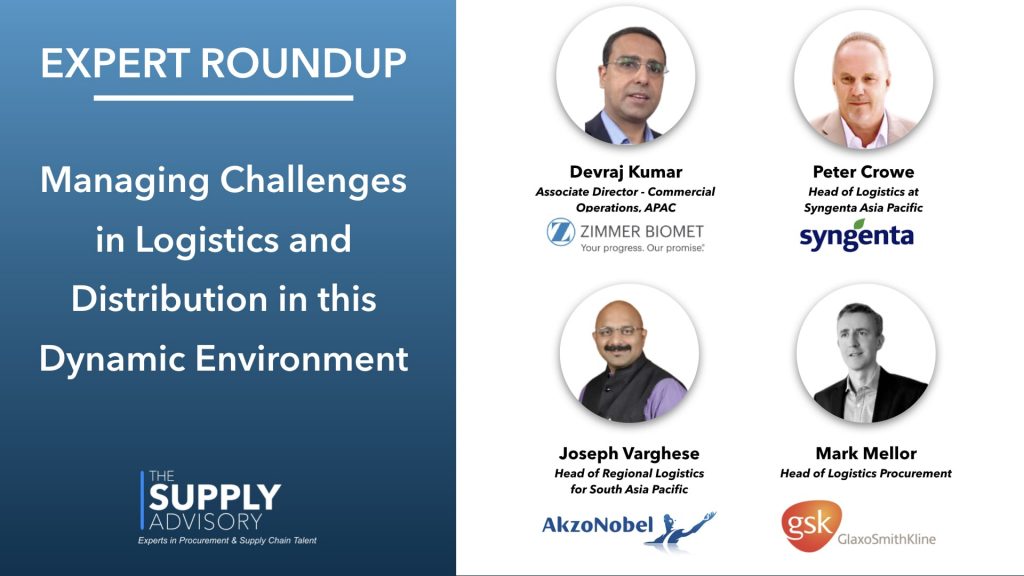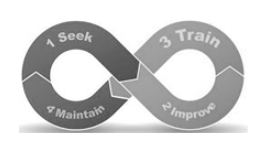
When it comes to the area of Logistics, Shipping and Distribution, pandemic or not, the word Dynamic is as real as it can get! The jam at the Suez canal is a classic example. Who would have thought of it?! But it is real and happening and the chain reaction is felt globally.
As such the pandemic had and continues to have a huge impact on the global supply chains. It has also created unique challenges for many organizations’ logistics and distribution functions and the entire logistics and Shipping industry.
With the world transitioning to new normal, companies reliant on imported raw materials and those with limited supply chains were among the heavily affected. Logistics providers, air and sea freight and even land transport took a hard hit due to the limitations in various countries and the stringent health protocols that sometimes resulted in delayed operations. Then, there’s also the matter of workforce shortage as thousands of companies have had to tighten their budgets and labourers fear coming to work because of the virus.
Despite the situation, companies have found ways to thrive and rise above the challenges.
For example, a large fraction of logistic companies now tap into tech solutions like IoT in their warehousing facilities, AI for customer and inventory management as well as robotic systems.
On top of that, the use of local storages and intermediary warehousing facilities has also been increasing, to respond to the current demands and warehousing challenges.
Indeed, a lot has changed since the pandemic struck. To give you a clear grasp of how various industries and logistics and distribution functions cope during these times, we invited four Logistics /Shipping and Distribution leaders from Agriscience, Paint, Pharmaceutical and Healthcare Equipment Industry for an expert round-up to gather insights.
- Devraj Kumar, Zimmer Biomet
- Peter Crowe, Syngenta
- Joseph Varghese, Akzonobel Paints
- Mark Mellor, GlaxoSmithKline
We asked them the same question: “What are the top 3 challenges in executing logistics and distribution strategies in APAC and the tips to overcome them?”
Check out their response below.
Devraj Kumar
Associate Director – Commercial Operations, APAC
Zimmer Biomet
1st challenge: The current logistics models & operations are dominantly fragmented and highly manual.
Recommended approach: In the world of VUCA, differentiated logistics models & operations are those which are integrating end2end logistics from various sourcing origins to end users/customers through a 4P layer:

- Process: Stitching together all processes of inbound freight[air/ocean], customs clearances, domestic transportation & warehousing.
- Platform: Early adoption of technology platforms like TMS,WMS and Track & Trace.
- People: Upskilling resources capability to work in a “date driven logistics” and Control Tower environment.
- Proficiency: Creating an environment of continuous improvements towards an infinity loop of operational excellence.
2nd challenge: Majority of logistics service procurement by shippers/BCOs’ are being done based on rates only.
Recommended approach: A balanced scorecard approach in selection of LSPs’ ensures a win-win long term partnership as structured below:
- Rates – 40%
- Implementation approach – 15%
- Cost savings proposal – 15%
- VAS & technology – 15%
- Account management – 10%
- Compliance audits – 5%
3rd challenge: Majority of performance measurement/KPIs’ of logistics operations are outdated.
Recommended approach: It’s critical that KPIs’ are designed more to measure forward looking initiatives rather than only historical activities/performances. This will ensure that innovative logistics models are in place and coupled with robust solutions; the early signals of potential disruptions are well captured and risks are mitigated.
Peter Crowe
Head of Logistics at Syngenta Asia Pacific
Syngenta
1st challenge: Build visibility into your supply chain
The worst case scenario during a global shipping disruption (pandemic) is if you do not have a thorough visibility of where your goods are. Probably your upstream supply chain of your inbound materials are even more in need of that visibility as those will keep your production sites running. Only by having this visibility, you will be in a position to prioritize.
2nd challenge: Be courageous to prioritize
If space gets limited, everybody tends to claim “their” order is the one to prioritize, which factually makes nothing a priority. It takes courage to declare part of your orders non-priority to prioritize the really critical ones. However, not everybody can be kept happy that way.
3rd challenge: Build trustworthy partnerships with your logistics partners
When the going gets tough and equipment and space gets limited, unavoidably carriers will need to choose whose cargo will be loaded. Not just those who shout the loudest and pay the most will be the lucky ones but those who over a period of time have proven that they are willing to treat that relation like a partnership worth developing not just for today’s space crunch but beyond that point.
Joseph Varghese
Head of Regional Logistics for South Asia Pacific
AkzoNobel Paints
1st challenge: Enhancing Customer Service Reliability
With increased cross-border restrictions, transportation of goods has experienced poor schedule reliability impacting customer service levels. Tough times call for decisive and proactive measures such as improving forecasting and planning processes, reviewing safety stocks, enhancing transportation flexibility with multiple freight forwarder/carrier options including different routes/modes of transportation, Business Continuity Plans (BCP) in place to mitigate the impact of stoppage in warehouse operations, and improving communication & tracking from order to delivery.
2nd challenge: Driving Cost Efficiencies
Freight costs have peaked to all-time high levels due to fuel & wage inflation. Driving logistics cost efficiencies can be achieved through measures such as reverse auction/e-bidding process with dynamic sourcing strategies, resetting the expectations of customers with clearly defined order to delivery Service Level Agreements (SLA’s), focus on average density utilisation per shipment, use of data analytics & transport management system (TMS) and focus on warehouse productivity through automation.
3rd challenge: Creating a safe, secure and sustainable logistics environment fit for the future
A safe, secure and sustainable logistics environment has to be cultivated to address consumer behaviour and climate changes. Implementation of robust safety protocols in organisations and securing online systems/transactions from cyber-attacks are the need of the hour. Sustainability practices such as supply chain mapping to reduce overall carbon footprint, freight space utilisation, re-usable and environment-friendly packaging, resource optimisation with reduction in energy, waste & water and utilisation of greener energy for warehouse operations should be mandated.
Mark Mellor
Head of Logistics Procurement
GlaxoSmithKline
1st challenge: Agility to react
The “new normal’ boils down to unpredictability. Few companies anticipated the global pandemic and even those that had it on their risk register couldn’t have anticipated the scale and impact. Whilst Covid is extreme, it’s one in an ever-increasing list of “unprecedented” events (Suez canal blockage, Trade wars, natural disasters…..) to challenge our incredibly interdependent global supply chain. As supply chain professionals we have to accept that you can’t predict the unpredictable. The future leaders will be those who build flexibility and agility into the supply chain, when something “unprecedented” happens they have already put in place the tools to give visibility where the product is in the supply chain, and have already built the agility to change sourcing, routing or production actions quickly to protect the supply chain and the customer
2nd challenge: Relationships
Now more than ever we have seen the value of working with the right suppliers and you can only execute agility when you have strong relationships to tackle ever-changing demands and challenges. Look for smart collaboration, opportunities to grow together, expand services or jointly invest in technology. By understanding each other’s objectives it helps you become the customer or supplier of choice. Build longer-term relationships, with the correct governance and performance management and drive total cost reduction rather than “price reduction”. By looking for and building partnerships you’ll be able to readjust faster than those who operate in isolation or with arms-length relationships.
3rd challenge: People
We have to fight to get the positives out of the huge impact of Covid. We have all worked remotely for over a year and this has proven that geographical restrictions should no longer be a barrier to having the best talent in the best roles. This is a huge opportunity for employees and employers alike, it will be a driver for further diversity & inclusion in our new teams and the companies who embrace and harness this as an opportunity will be the top performers in the “new normal”
Logistics and Distribution/Shipping is that key piece of the puzzle without which the Supply Chain can’t be called complete; and as you can see they are constantly evolving.
Again, we at The Supply Advisory would like to thank our contributors, Devraj, Peter, Joseph, and Mark for pulling out time to share their insights on this important subject. We appreciate your generosity!
Stay tuned here at The Supply Advisory Blog for more expert roundups and other exciting content on Supply Chain Management.

Ananya Sinha Roy is the Director at The Supply Advisory (a division of Datasearch Consulting), a leading executive recruitment firm specialising in Procurement & Supply Chain.
You can view the The Supply Advisory website or contact them directly at info@supplyadvisory.com for a more detailed discussion.



